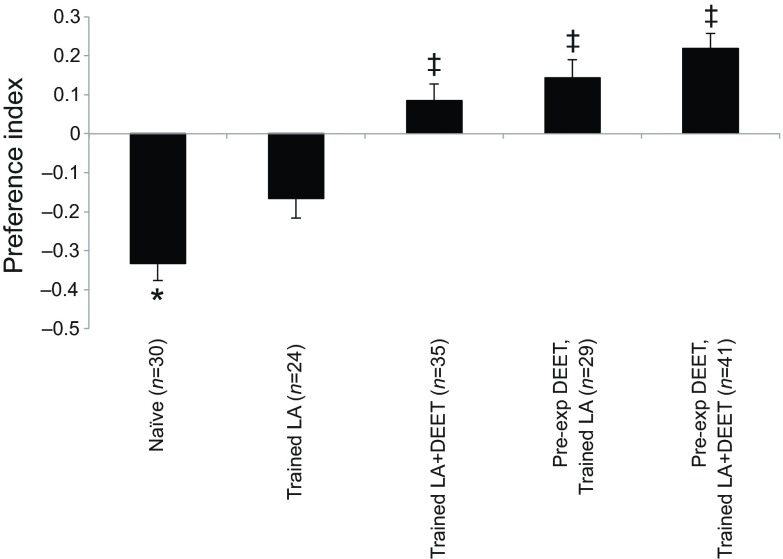Fig. 5.
Preference of group-trained and individually tested A. aegypti females to LA and DEET. Once placed in the olfactometer, mosquitoes were given a choice between two stimuli: clean air versus air loaded with a mixture of LA and 10% DEET. Preference is represented as the preference index computed from the distribution of insects in the olfactometer, and error bars represent the standard errors of the binary distribution. Each bar represents an experimental group: naïve, untrained groups; trained LA, trained with LA only; trained LA+DEET, trained with LA plus DEET; pre-exp DEET, trained LA, pre-exposed to DEET 1 h before training and then trained to LA only; pre-exp DEET, trained LA+DEET, pre-exposed to DEET 1 h before training and then trained to LA+DEET. Asterisks indicate distributions that are significantly different from random (P<0.05), and double daggers indicate distributions that are significantly different from the distribution of naïve, untrained insects when tested for their response to LA+DEET (P<0.05).

